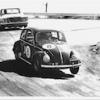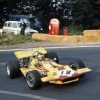...
Also agree that it reflects very badly on all the other drivers, except Purley of course. The usual argument that they saw a driver out of the car, etc does not hold up.
....
The spirit of the times was very different from today, though. Lorenzo Bandini (Monaco '67), Jacky Ickx & Jack Oliver (Jarama 1970), Jo Siffert (Brands Hatch 1971); in all cases the race went on in spite of drivers being caught in fires. Ickx and Oliver were lucky to survive, as was Clay Regazzoni at Kyalami in 1973 (we must not forget poor Peter Revson at the same circuit a year later).
The old days were not necessarily good.
Just a point of detail, Mohican; the Brands 1971 race didn't continue after Jo Siffert's crash. The leaders were already through Hawthorns, obviously, once the fire developed. If I remember rightly, a few cars running directly behind Jo (eg John Surtees) scraped through and headed for the pits. (They must have come past me, I was at Clearways, but I only recall the dark smoke billowing up behind the trees). I'm fairly sure the midfield and backmarkers ground to a halt on the same lap as the accident, whereas Gethin, Fittipaldi, Stewart etc. presumably were flagged down on the next lap as they rounded South Bank, certainly before Pilgrim's Drop. There's an upsetting photo taken from behind the stationary cars as drivers watch the fire at Hawthorns.
I'm sure that in 1973, when I was 15, I couldn't understand why the other drivers didn't stop to help at Zandvoort. I think differently now. David Purley, I believe, was close enough behind Roger Williamson to see exactly what happened and chose to stop and do something incredibly brave. But the drivers were there to race and the organisers to organise. No-one could accuse Denny Hulme, Mike Hailwood and others of being cowardly - they were brave guys - but they, and campaigner Jackie Stewart, were let down by incompetent race (and championship) organisation. The drivers should not have been put in a position where they were made to feel guilty for continuing to race. Trialling the 'safety car' later that season was a direct consequence of the Zandvoort tragedy.
Apologies for drifting OT.
























